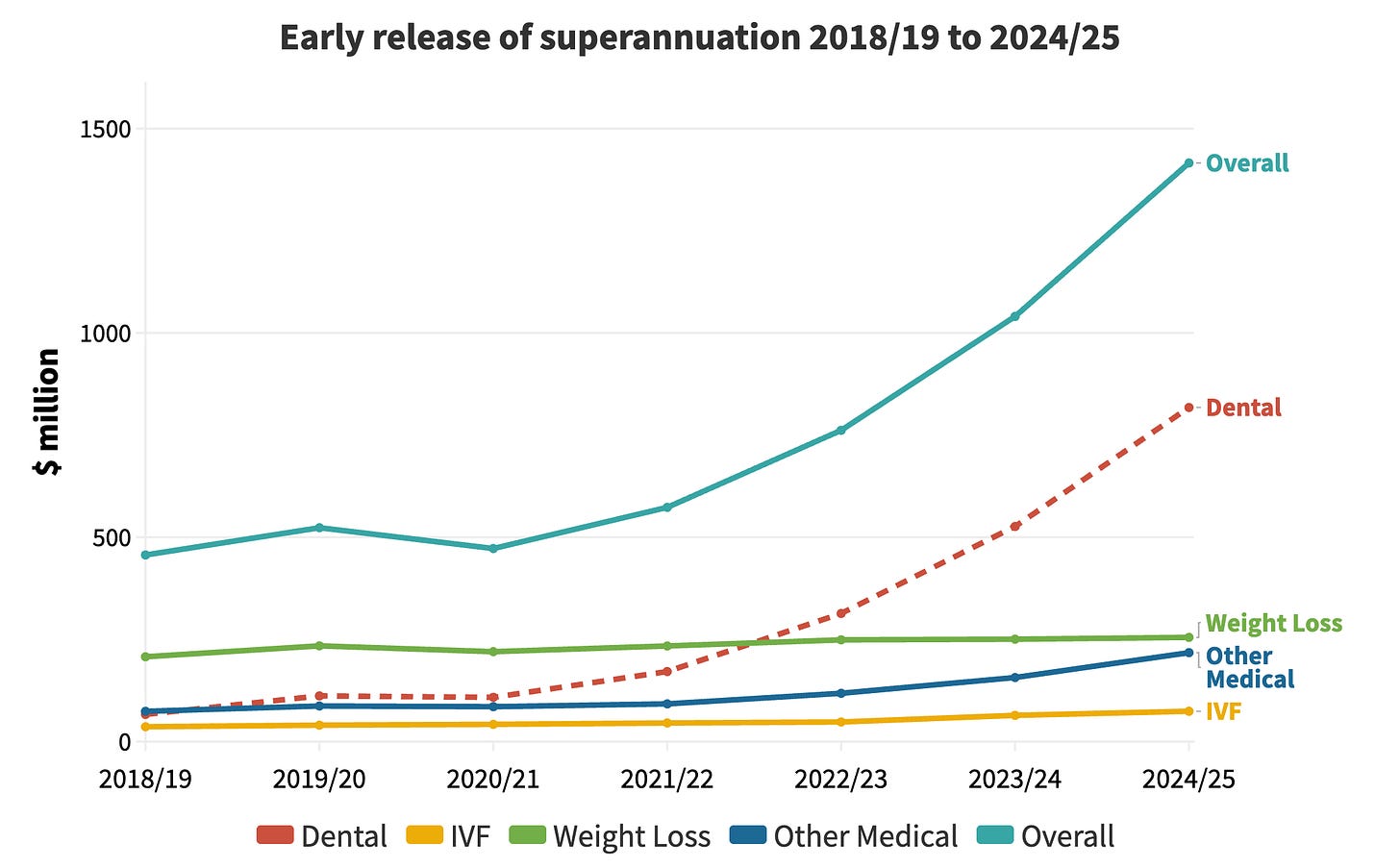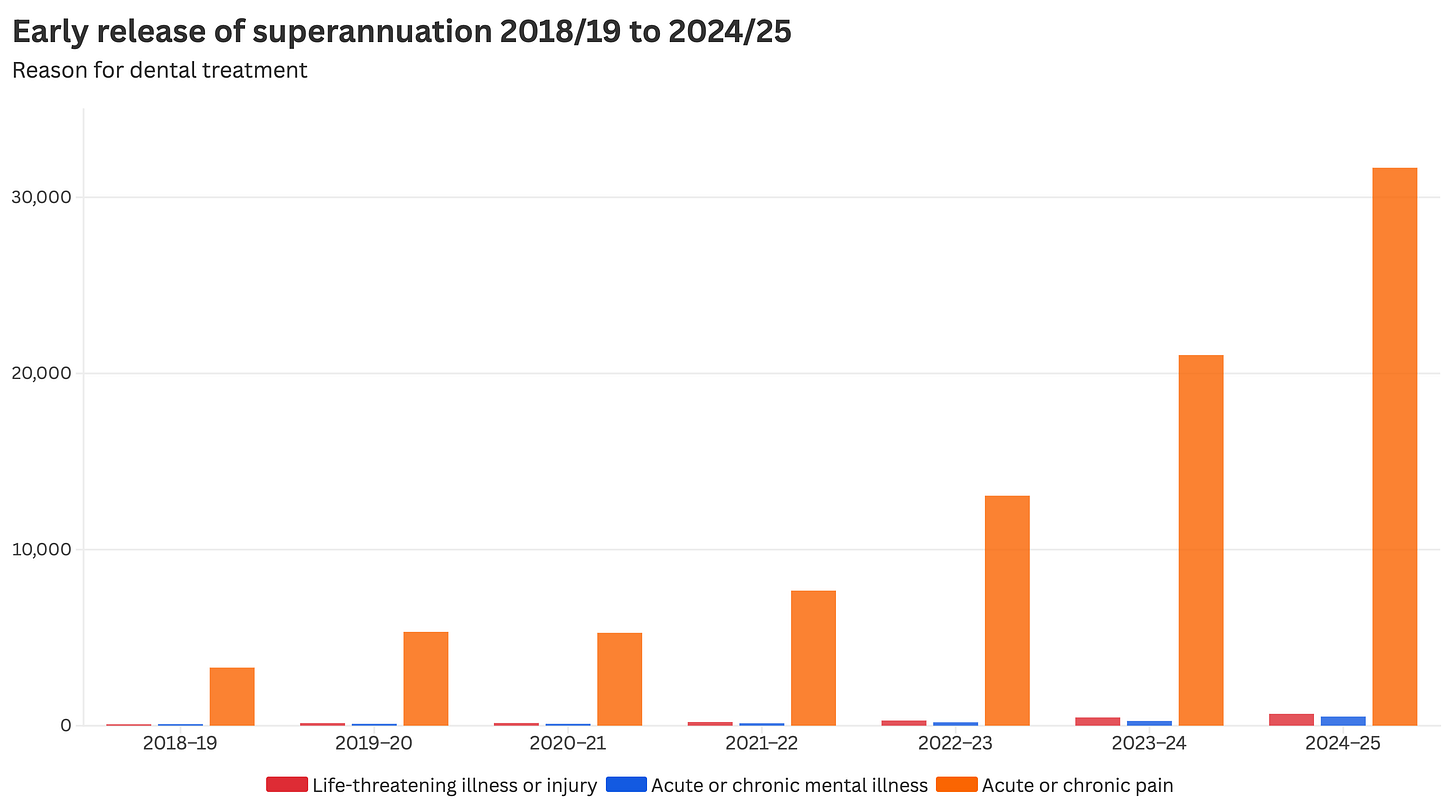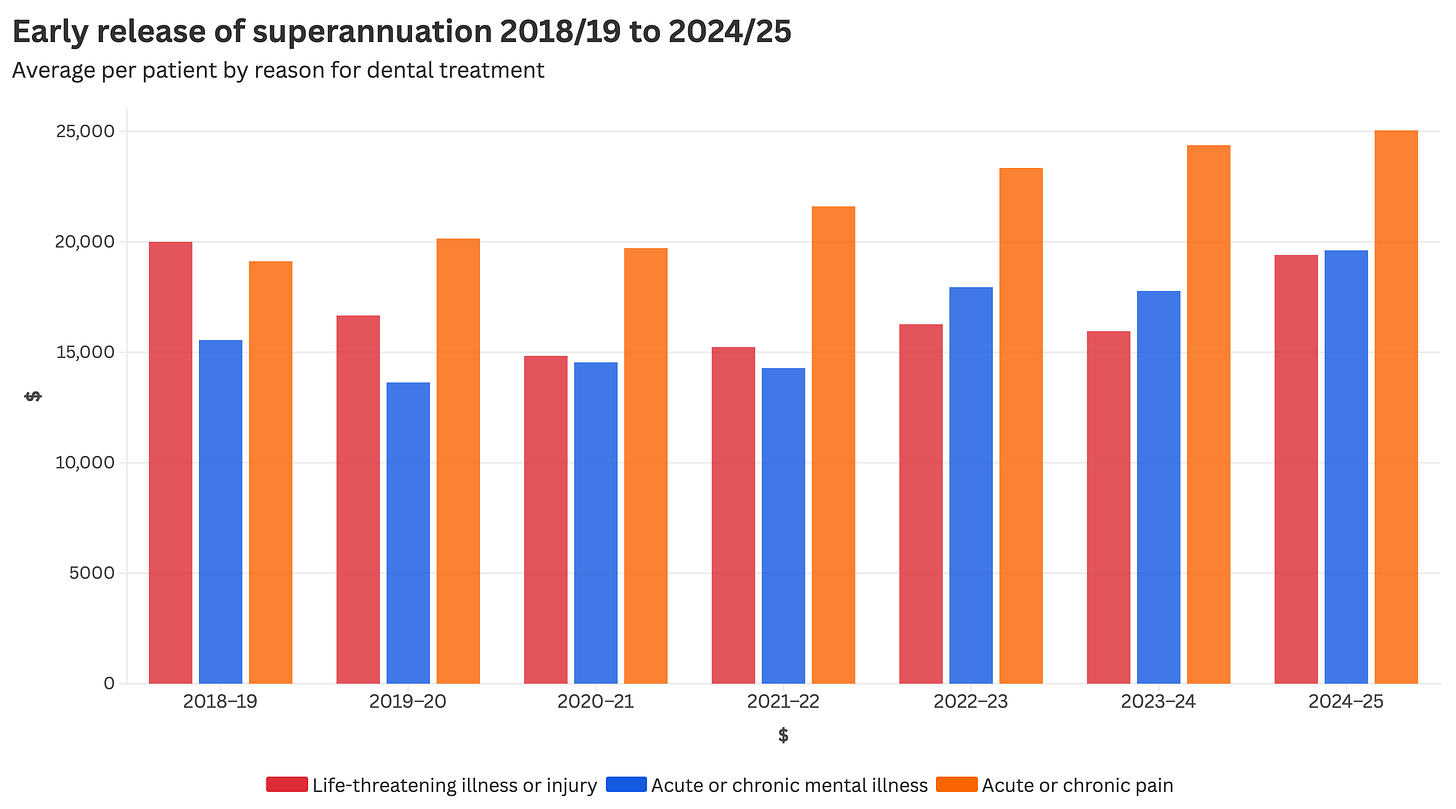Trickle of early release super for dental treatment now a flood
The Australian Tax Office and Ahpra have expressed significant concerns about the flood of withdrawals from superannuation to fund dental treatment.
To the surprise of absolutely no one, new data released by the Australian Tax Office has shown another huge jump in the number of applications and the amount of money released under the compassionate release of superannuation scheme for dental treatment. In the past year, Australians withdrew $817.6 million from their superannuation accounts to pay for dental treatment, a 55% increase from the year before.
The dental category now makes up more than half of the $1.42 billion that was withdrawn in 2024/25, up from 30% just three years ago. The average amount withdrawn per person is now $24,889, up from $20,018 five year ago. Over the past five years more than $1.9 billion has been withdrawn from superannuation accounts for dental treatment.
The data was clearly concerning enough for the Australian Taxation Office and Ahpra to release a joint statement aimed to stamp out business models and inappropriate practices that seek to use superannuation to pay for overly expensive or unnecessary medical treatments.
Comments from the Deputy Commissioner Emma Rosenzweig suggest that the ATO is aware that some practitioners are inappropriately supporting patients to access their superannuation outside of the guidelines, particularly for cosmetic procedures.
‘We are seeing practitioners making inaccurate statements in medical reports. The ATO relies on medical and dental professionals to act in the best interests of their patients to prepare accurate reports regarding their diagnoses and the required treatment strategy”
ATO Deputy Commissioner Emma Rosenzweig
And Ahpra CEO Justin Untersteiner said:
“I’m stunned to hear that some businesses and practitioners are taking advantage of this process to push overly expensive or unnecessary treatments. There is an inherent trust that the community places in their practitioners and taking advantage of people in need is never acceptable. Any advice on what procedure is necessary should be based on the patients’ best interest and not influenced by financial gain or incentives.”
This follows a warning issued to dental practitioners by the Dental Board of Australia in May about the way that some practitioners were marketing the scheme to patients, reminding them of the requirement to ensure that the services they are recommending to patients are necessary, appropriate and likely to benefit the patient. They noted at the time that they had received 13 notifications about patients accessing superannuation for dental treatment, including 6 related to the quality of treatment and 5 related to advertising encouraging patients to access their superannuation to fund dental treatment.
In 2024/25 a total of 36,830 people applied for release under the dental category, with 32,850 approved – an increase of 11,000 from the previous year. The approval rate for dental applications continues to increase. Despite this, some practitioners report that patients submit an application to have dental treatment funded, but once the funds are released to the patient they do not return for treatment. There is no publicly available data on the proportion of patients who have funds released who then fail to have the treatment that they have requested.
These are some of the many things that other dental practitioners have reported to me about the compassionate release of superannuation scheme:
I have had patients come to me for a second opinion after being told that they needed extensive dental treatment (implants, crowns) and that they should access their superannuation.
There are some predatory dental practices that need to be reported.
Sadly, over-servicing is a known issue in dentistry.
Many dental practices seem to be almost entirely reliant on treatment using superannuation.
There has been a number of high-profile cases where dental practices have collapsed and gone into administration leaving many patients stranded having withdrawn their superannuation but not had their treatment completed. This suggests that some practitioners are building business models that are heavily reliant on this scheme.
This data continues to expose a major gap in Australia’s dental care system, one that was highlighted by the Senate Select Committee into dental care. There is inequitable access to dental care and a public dental service that was underfunded and overstretched, with cost a major barrier for many Australians seeking dental care – hence the growing number of people forced to raid their future retirement funds.
Despite highlighting these issues for more than a year, and warnings that this problem would continue to grow, there still appears to be a disturbing lack of action. It will be interesting now to see what the next 12 months brings.
Additional Data
Reason for dental treatment in 2024/25:
Life-threatening illness or injury - 675
Acute or chronic mental illness - 520
Acute or chronic pain - 31,680





